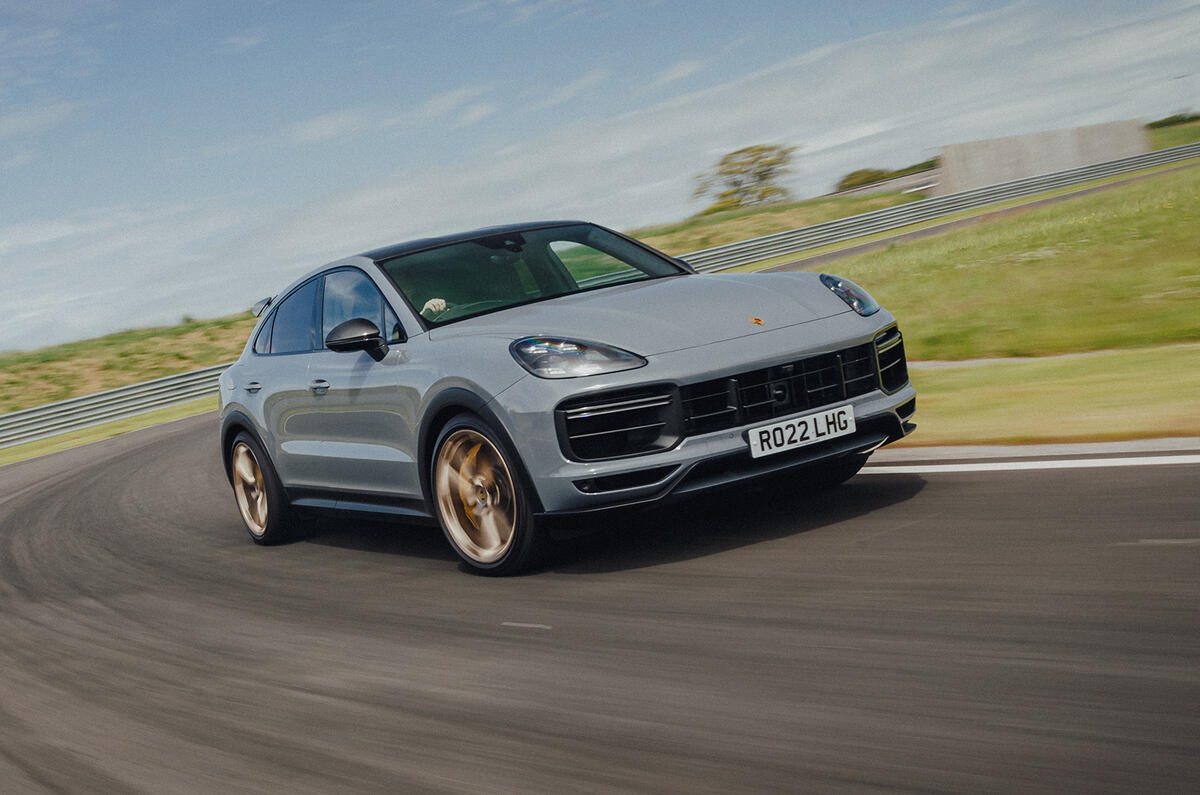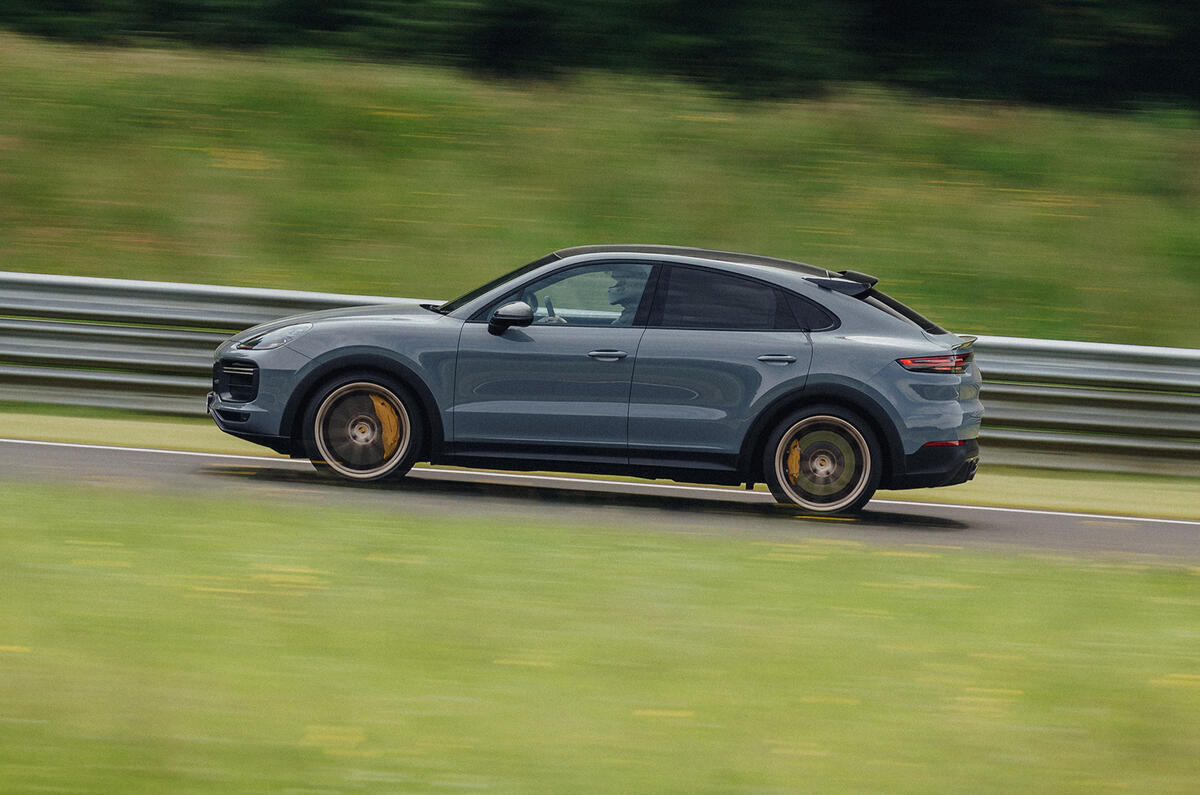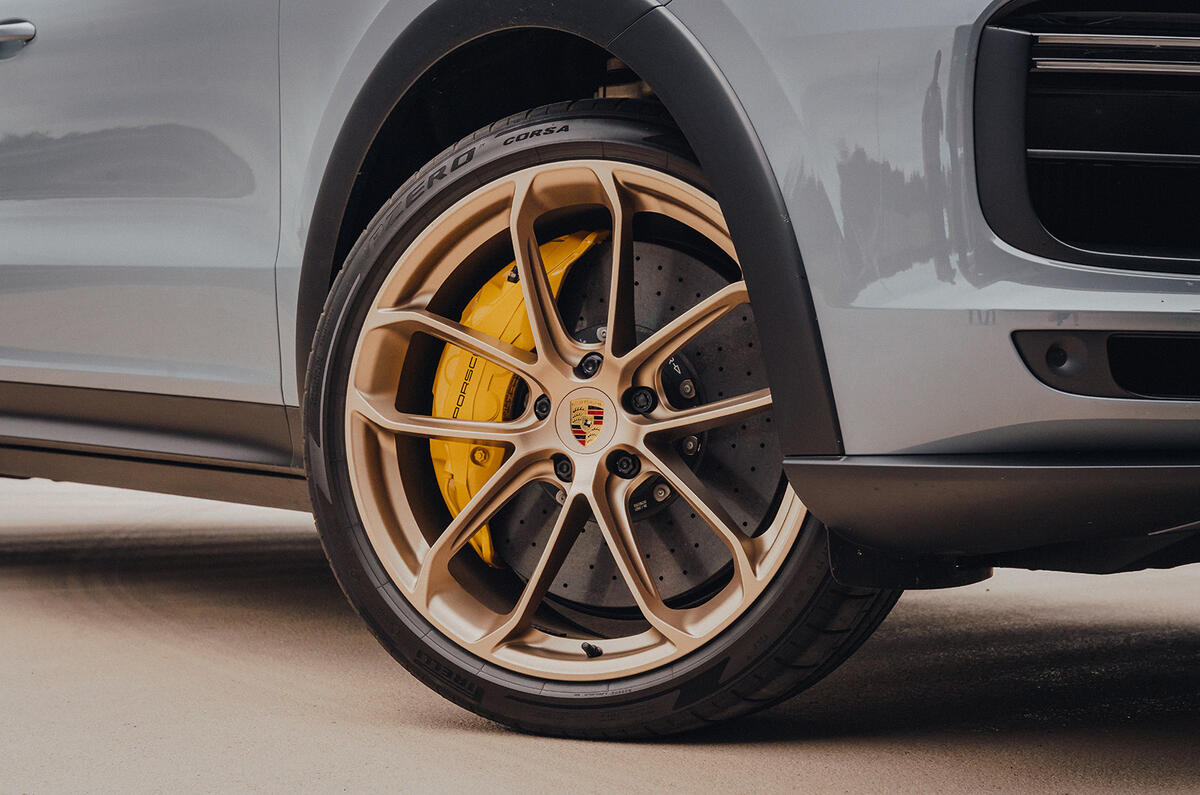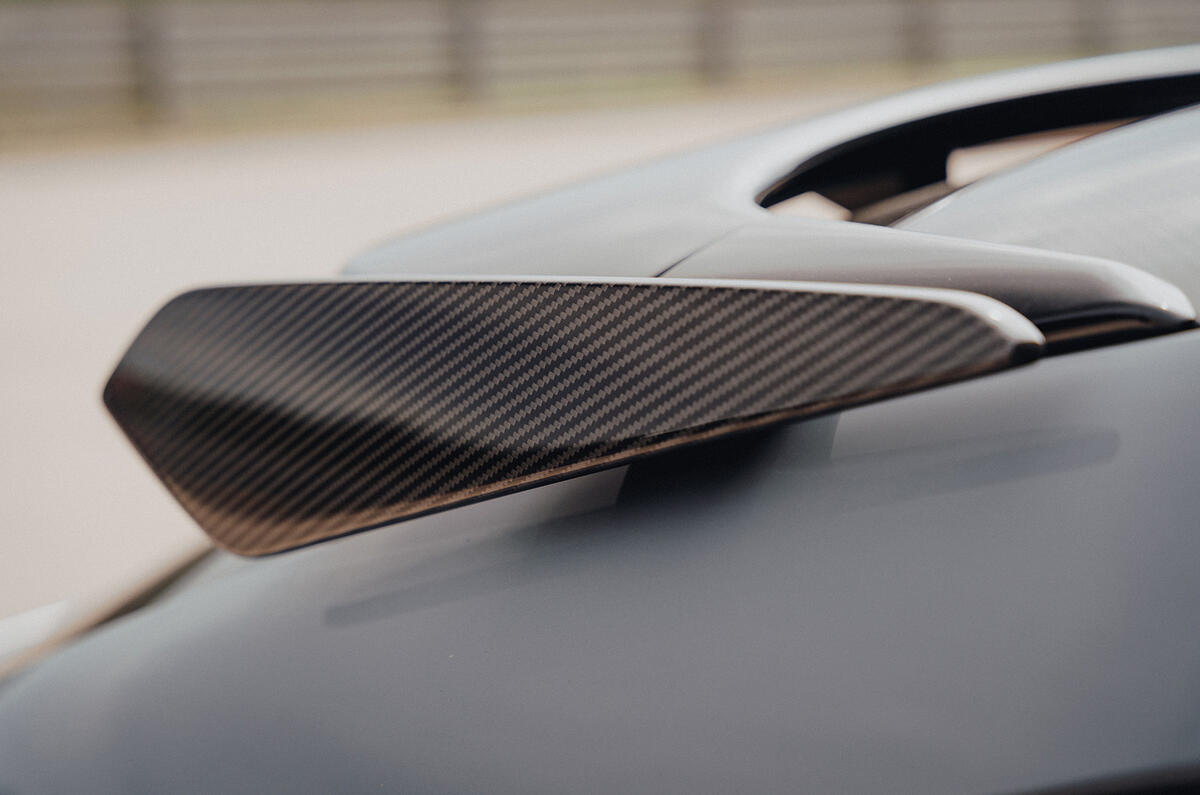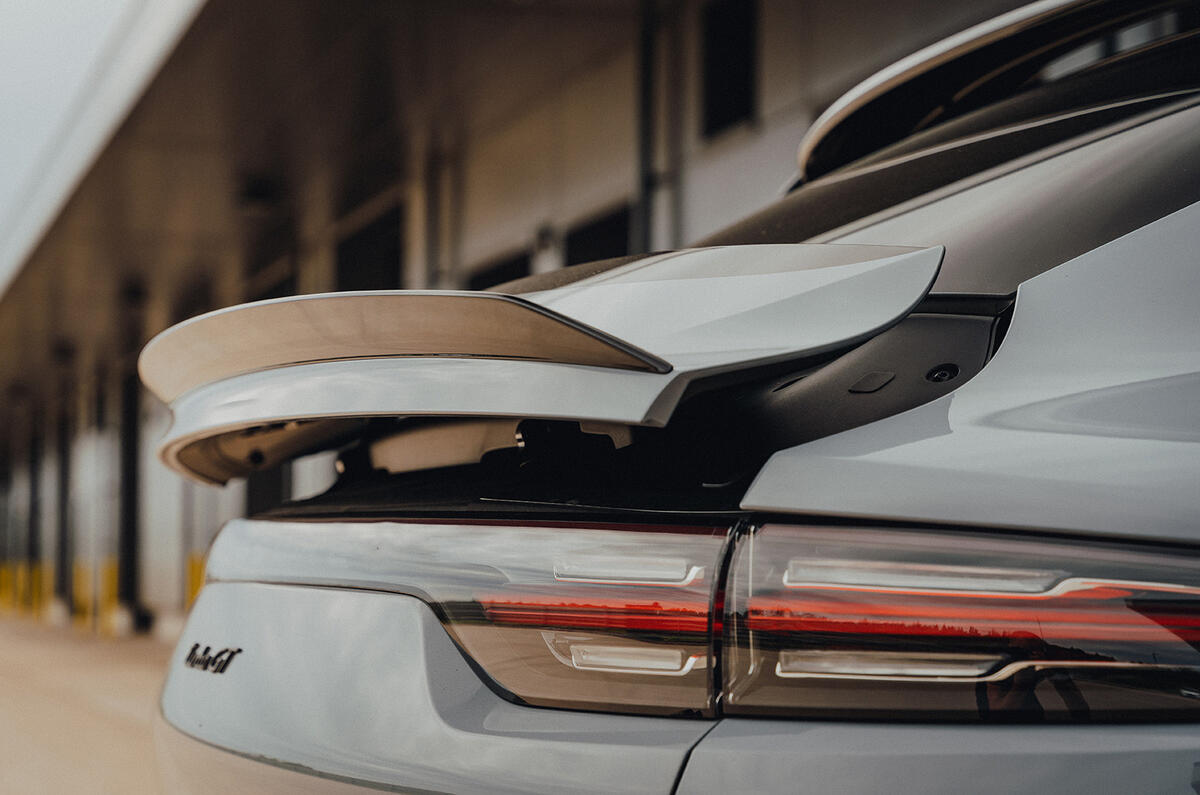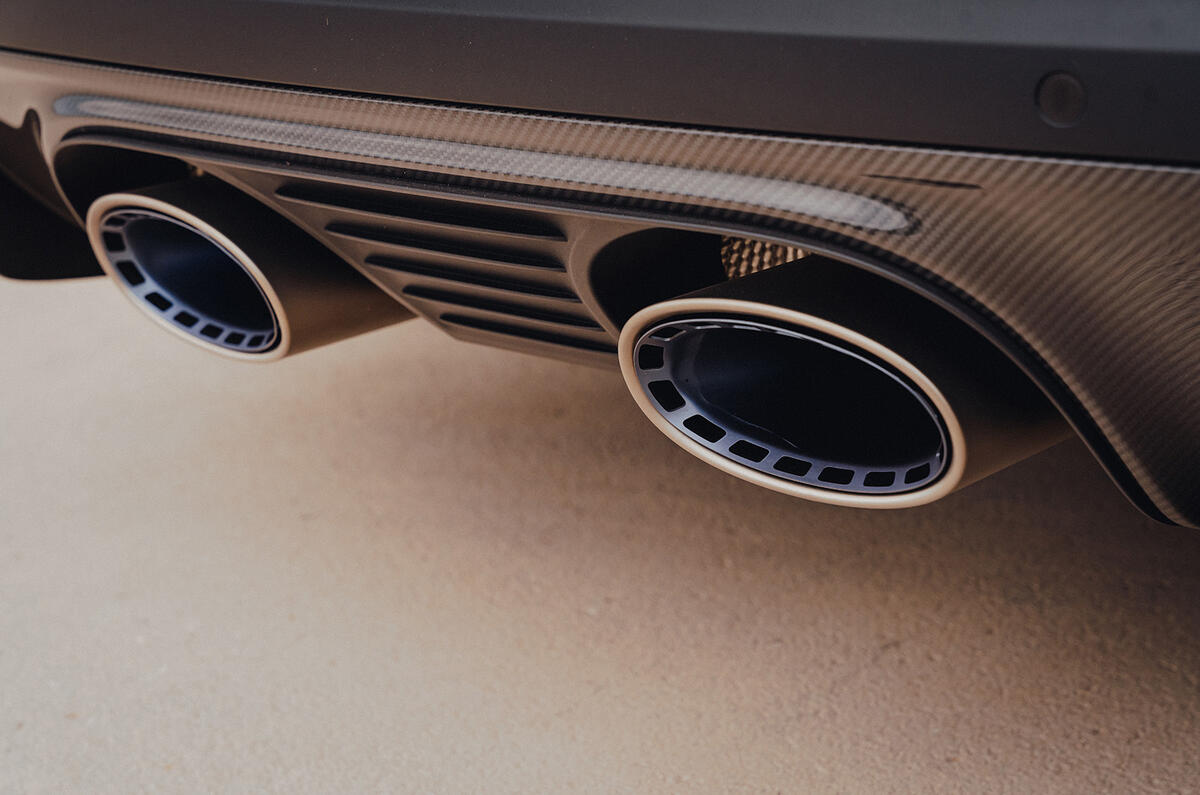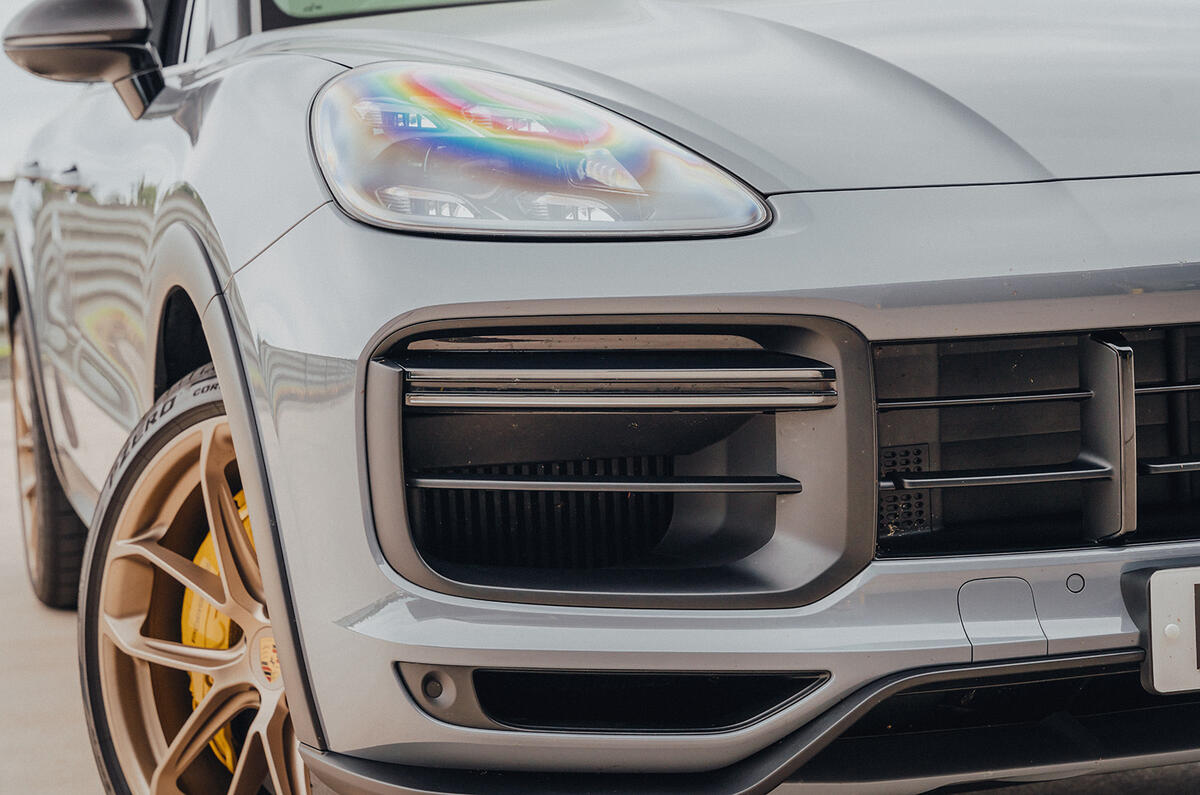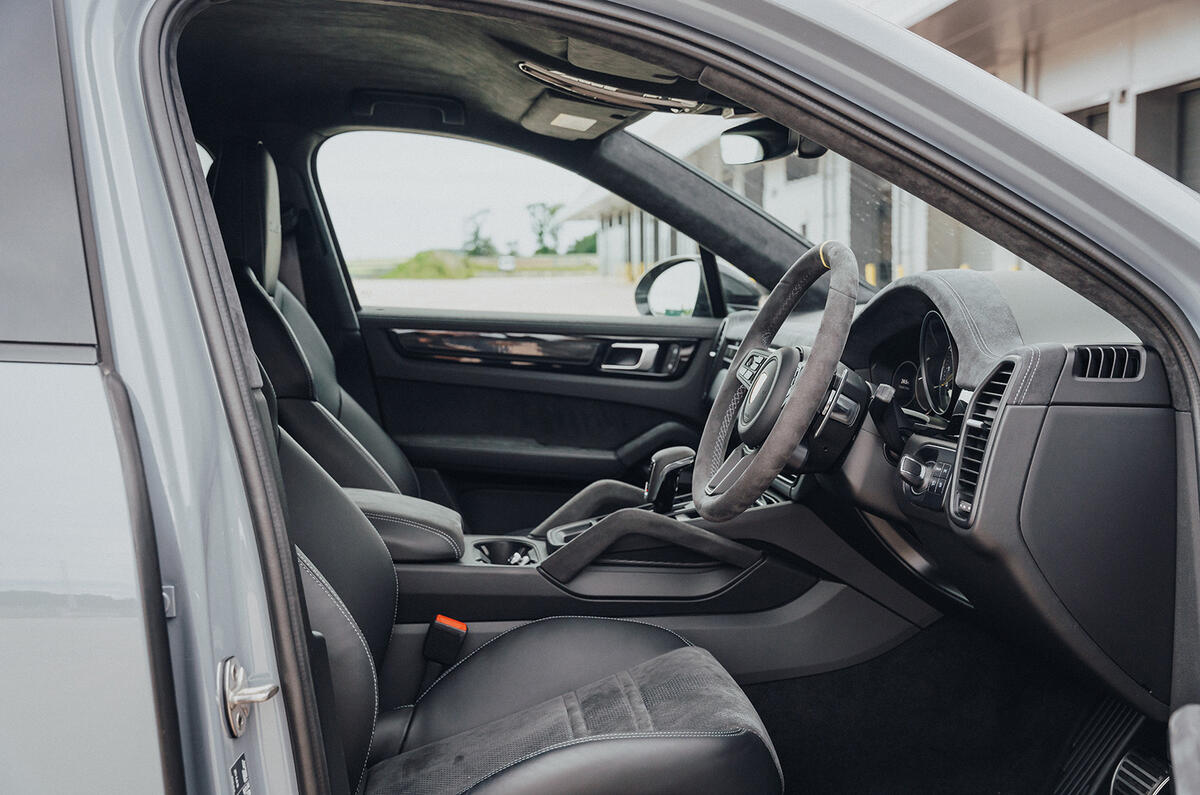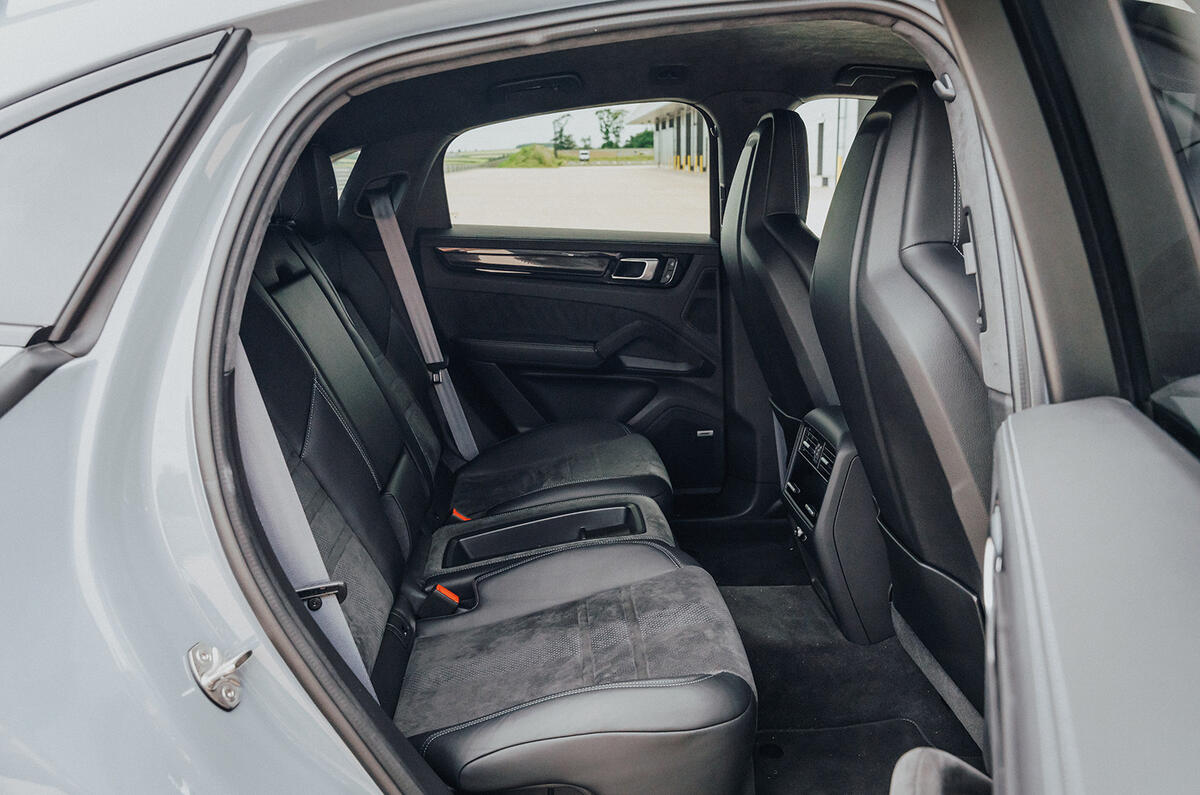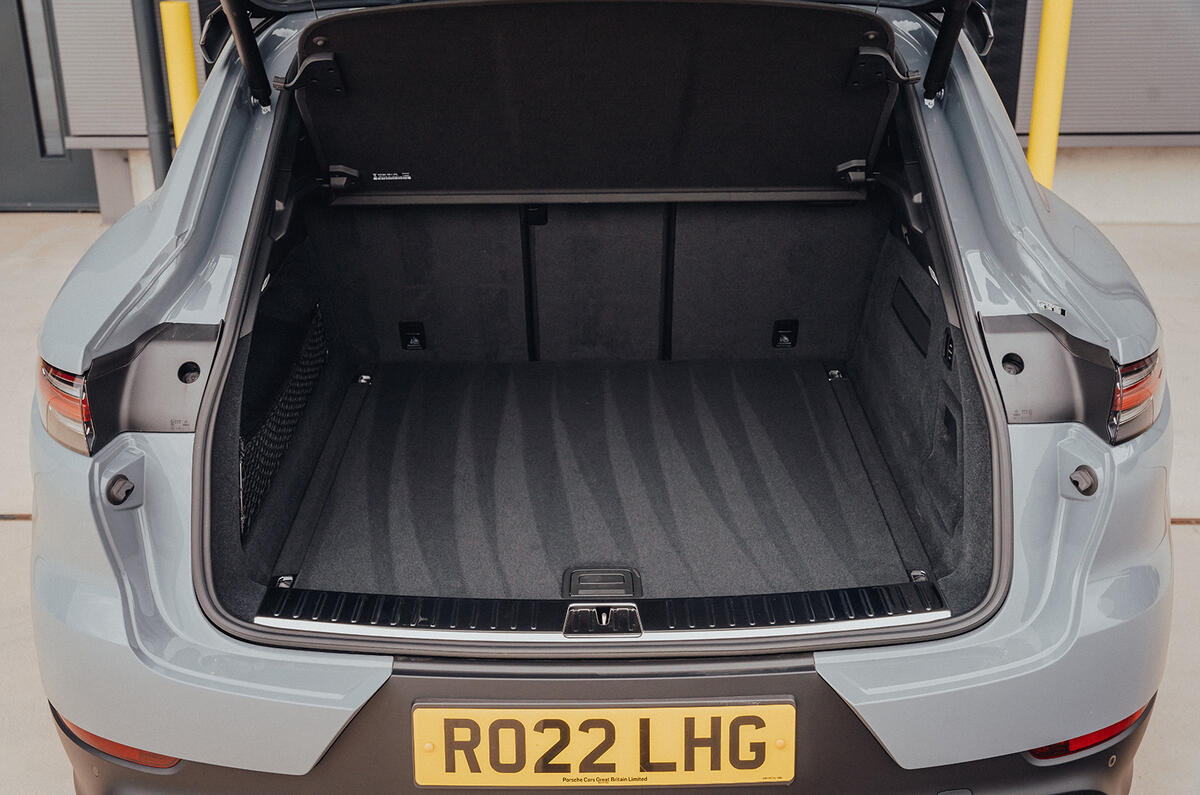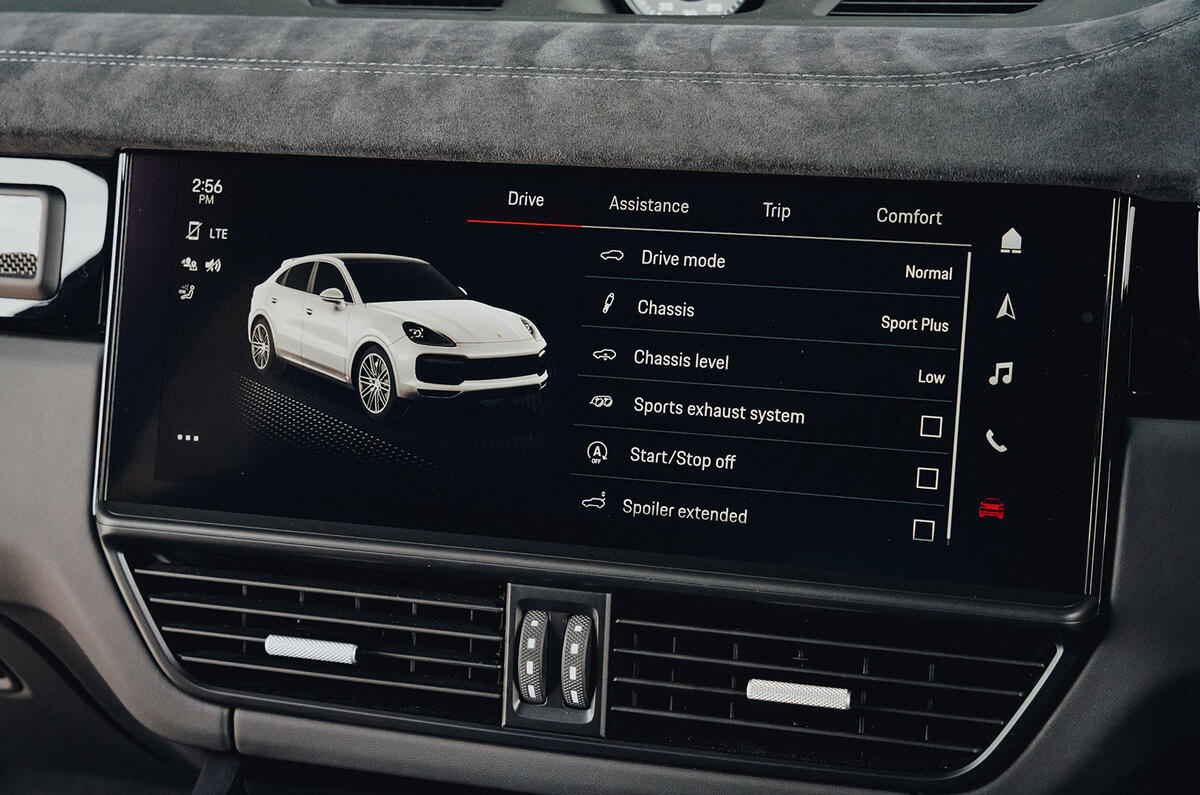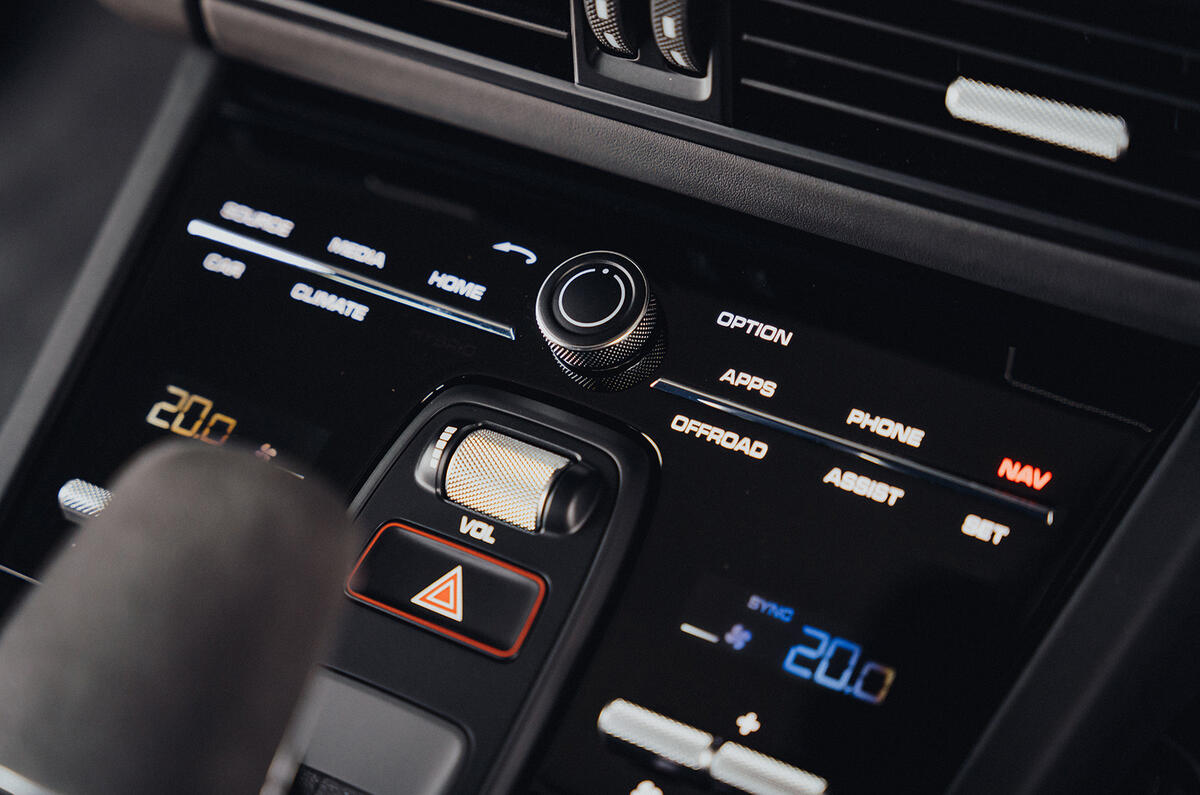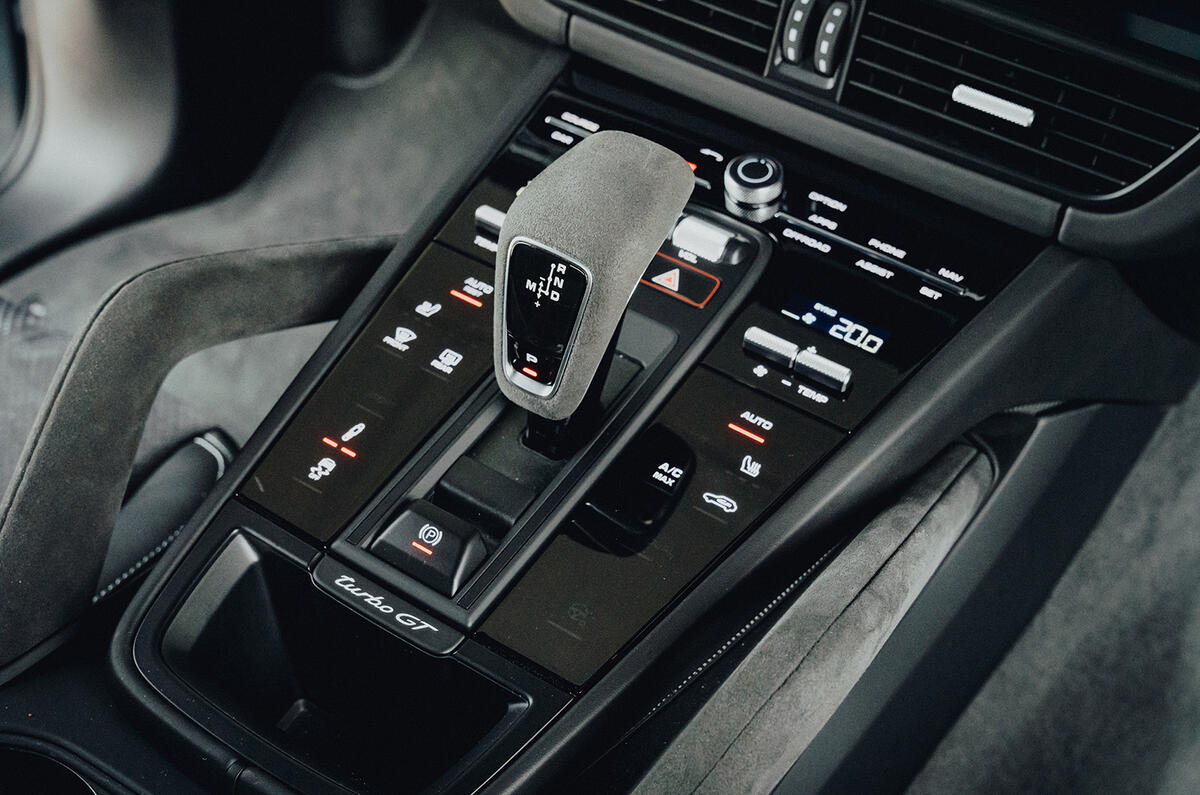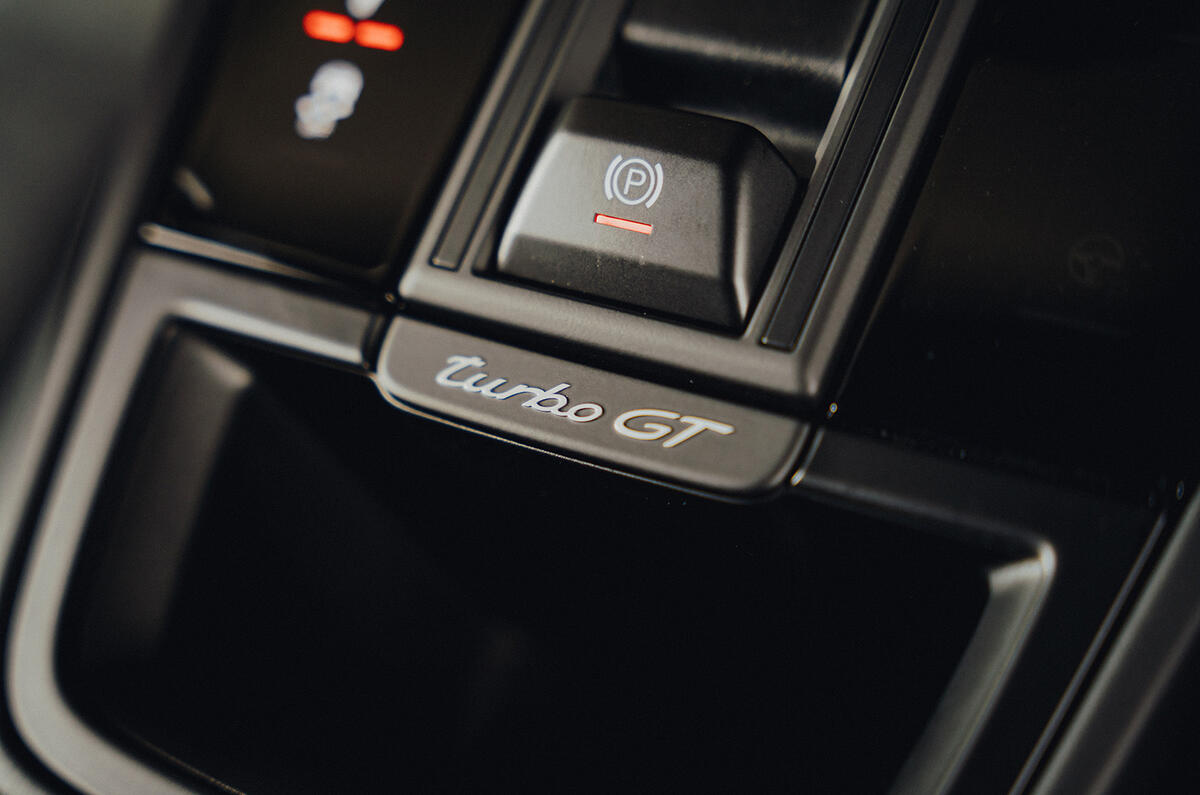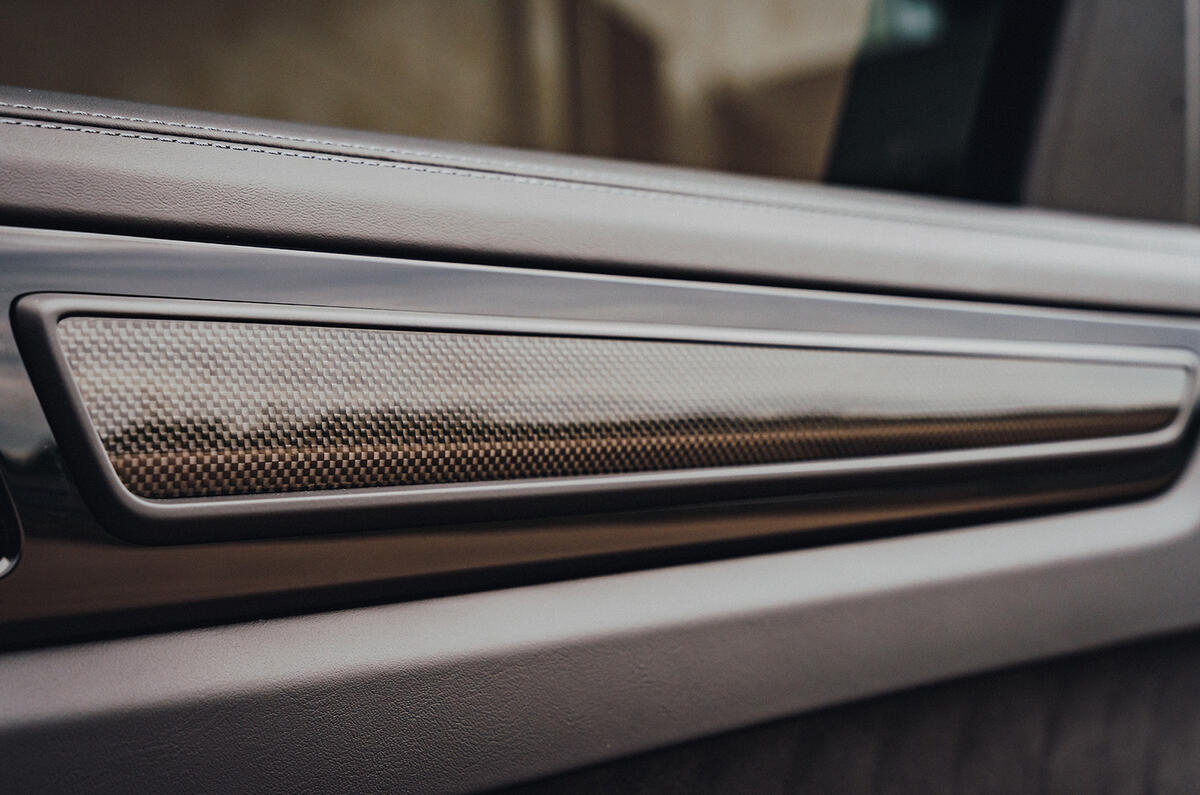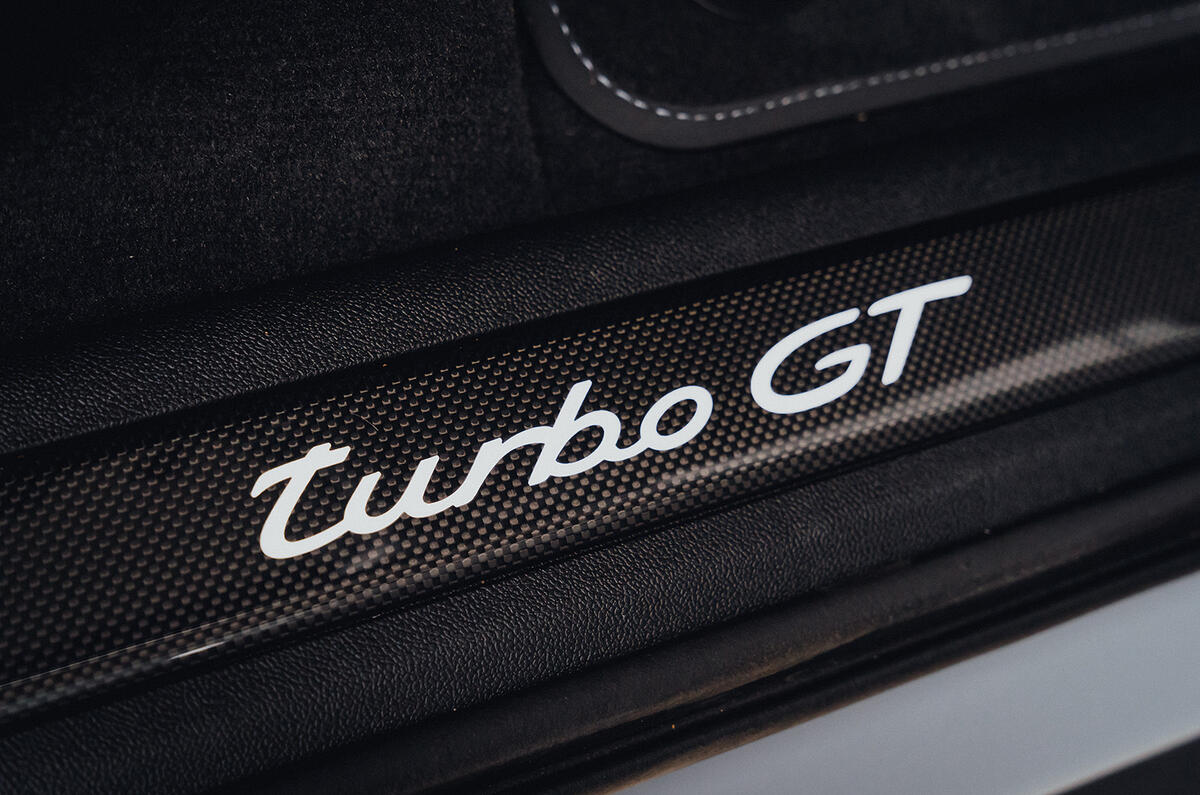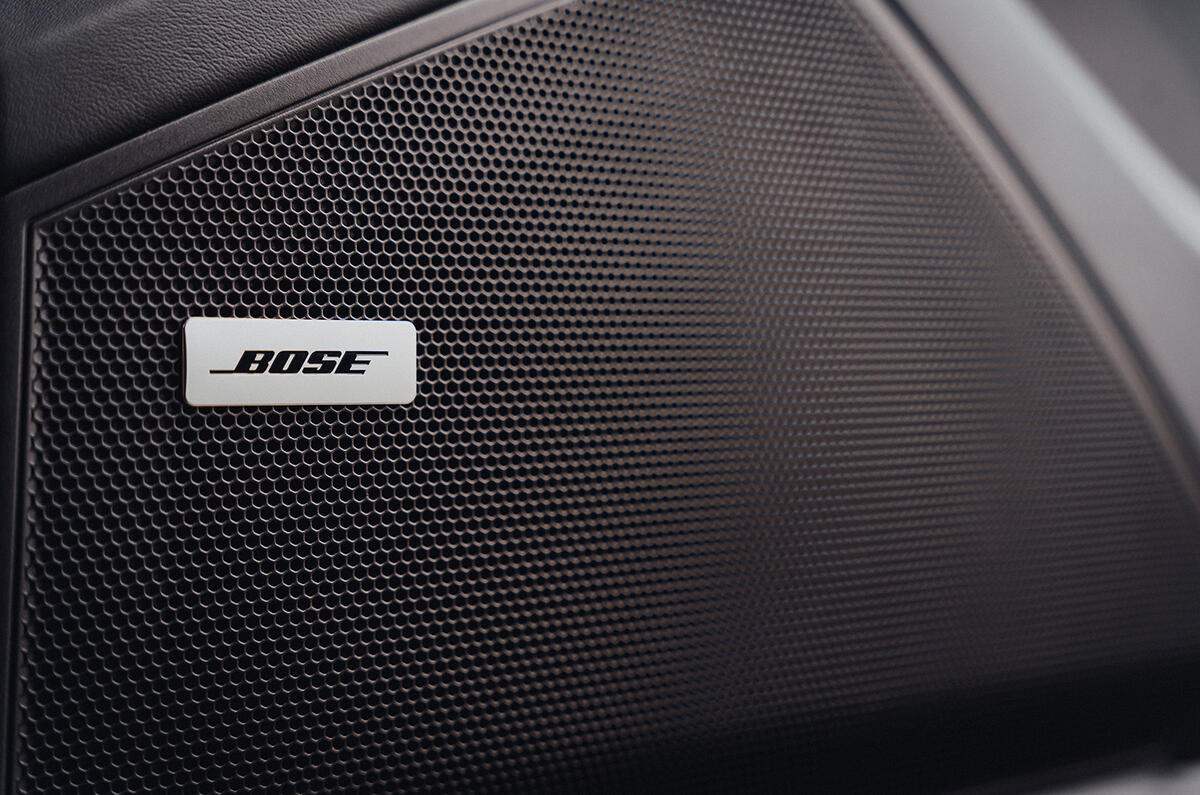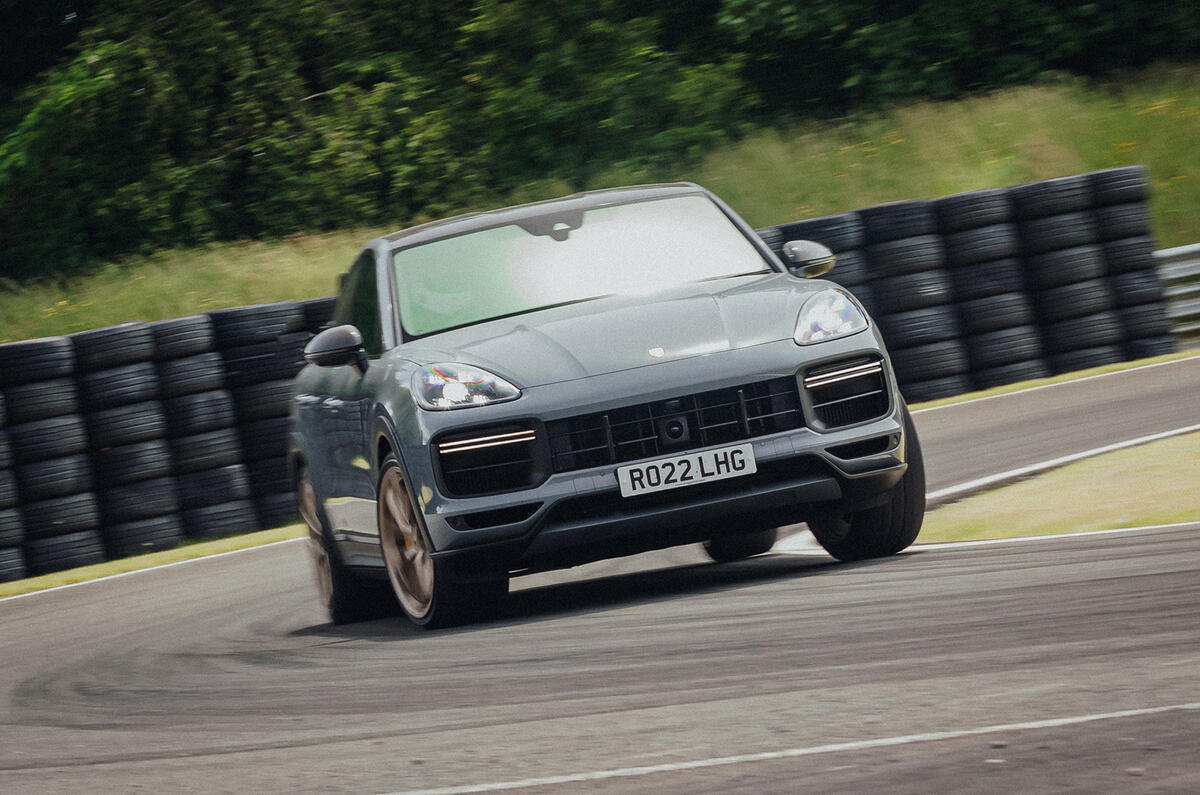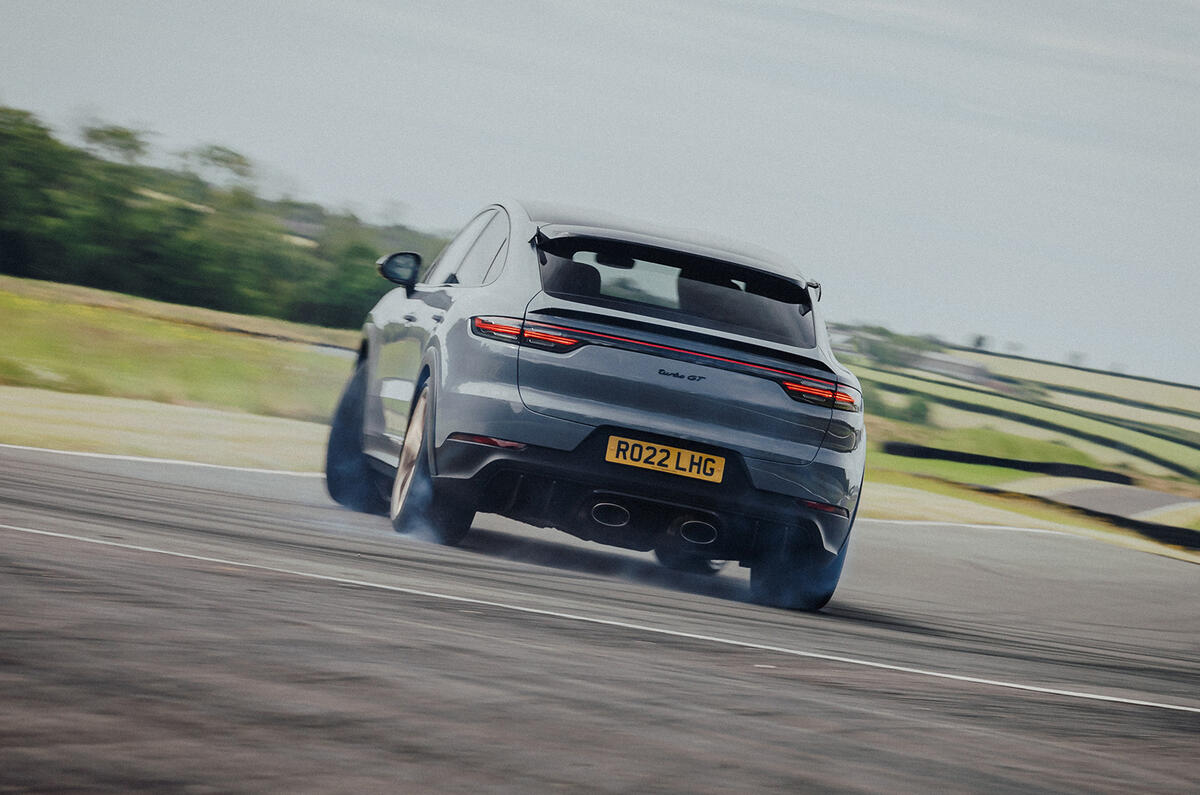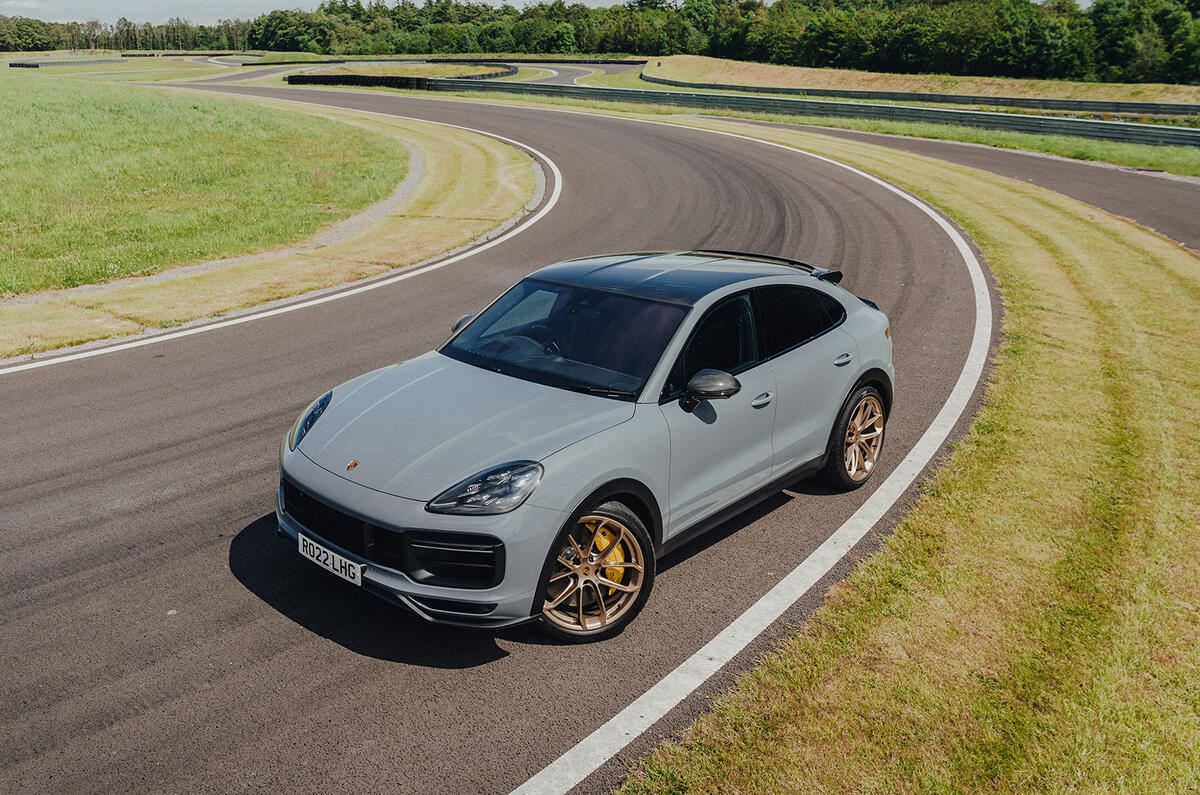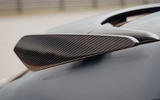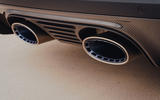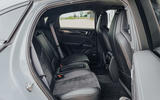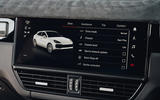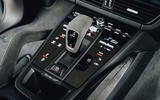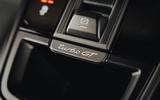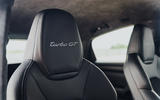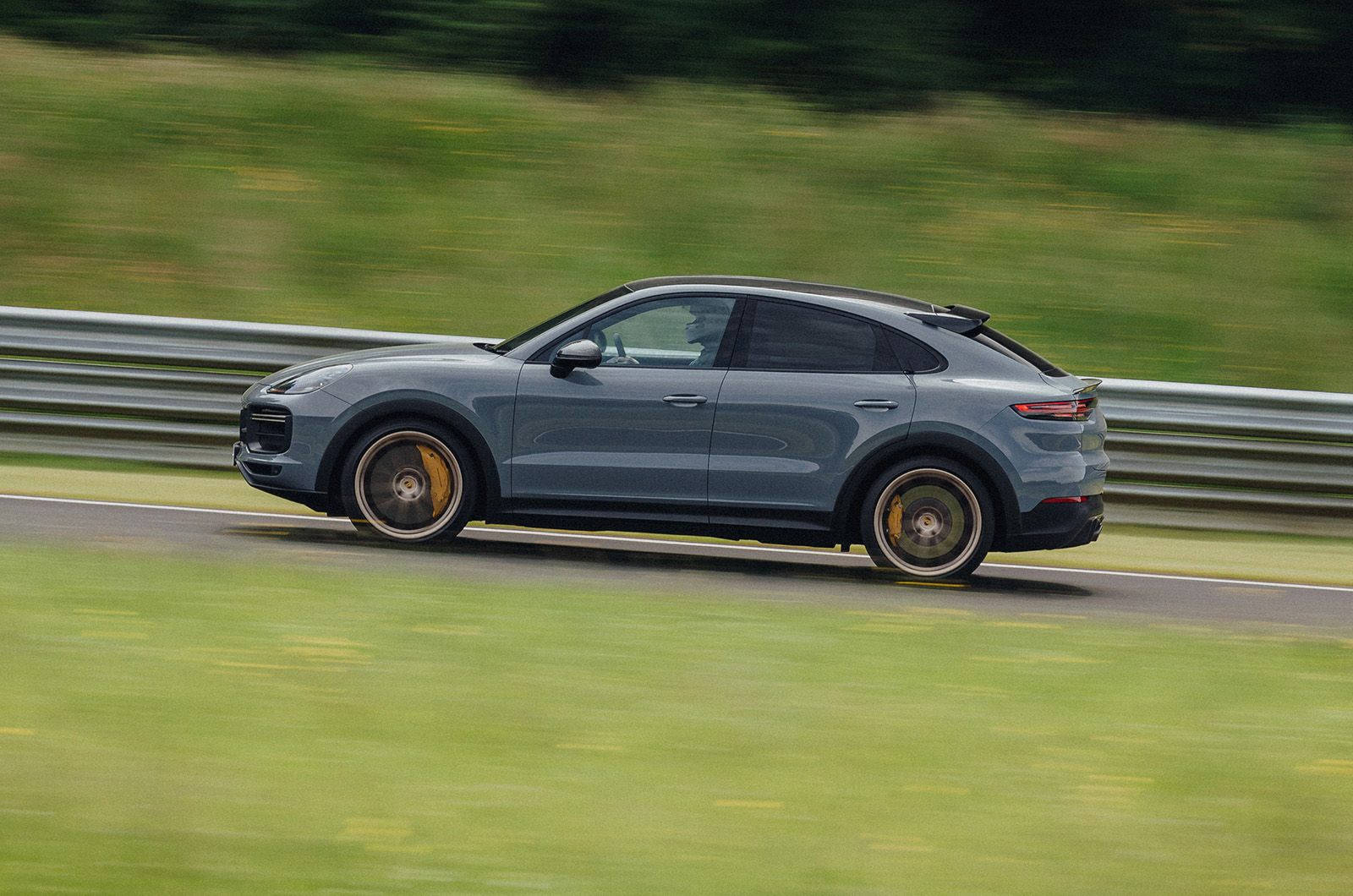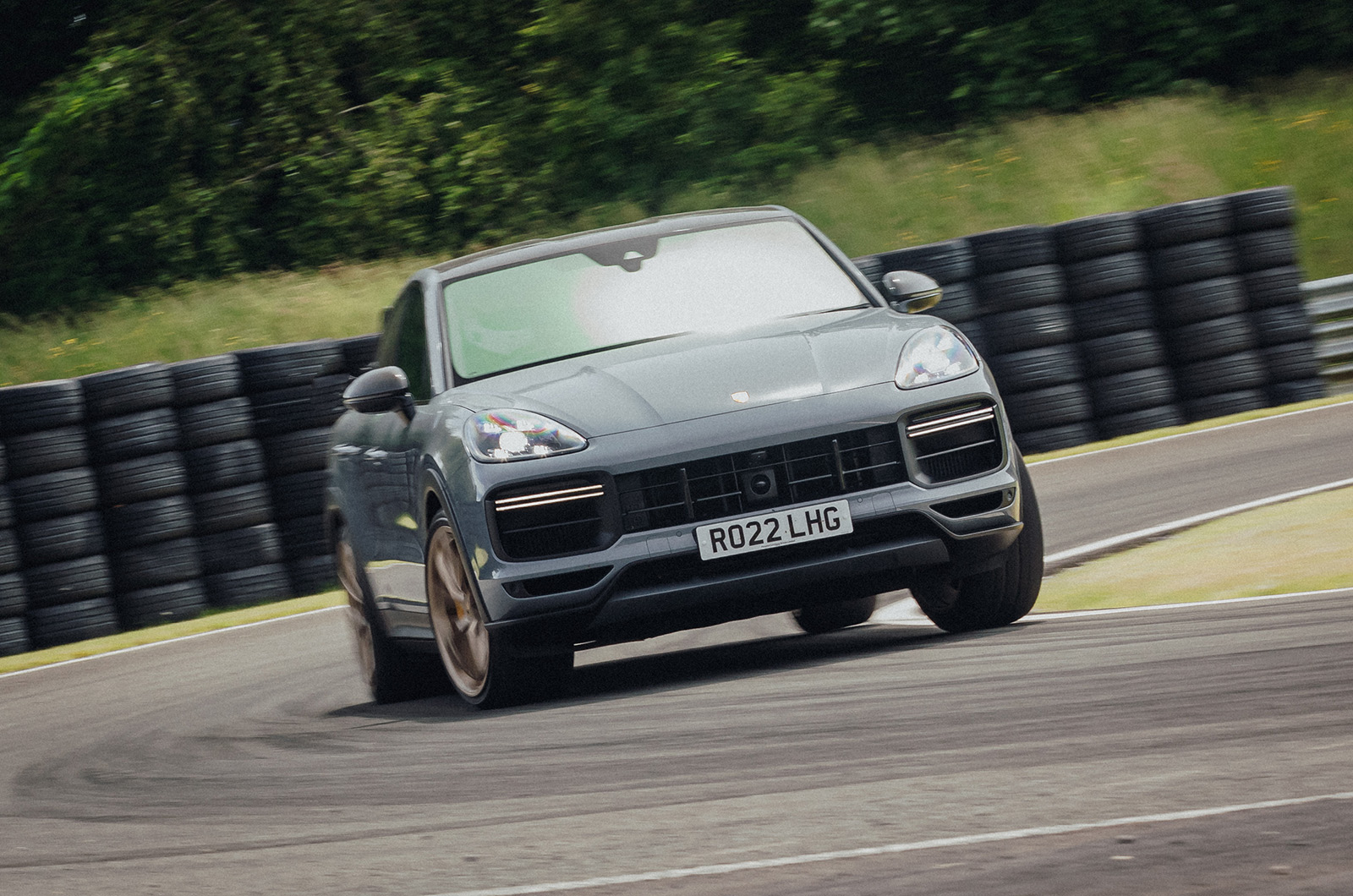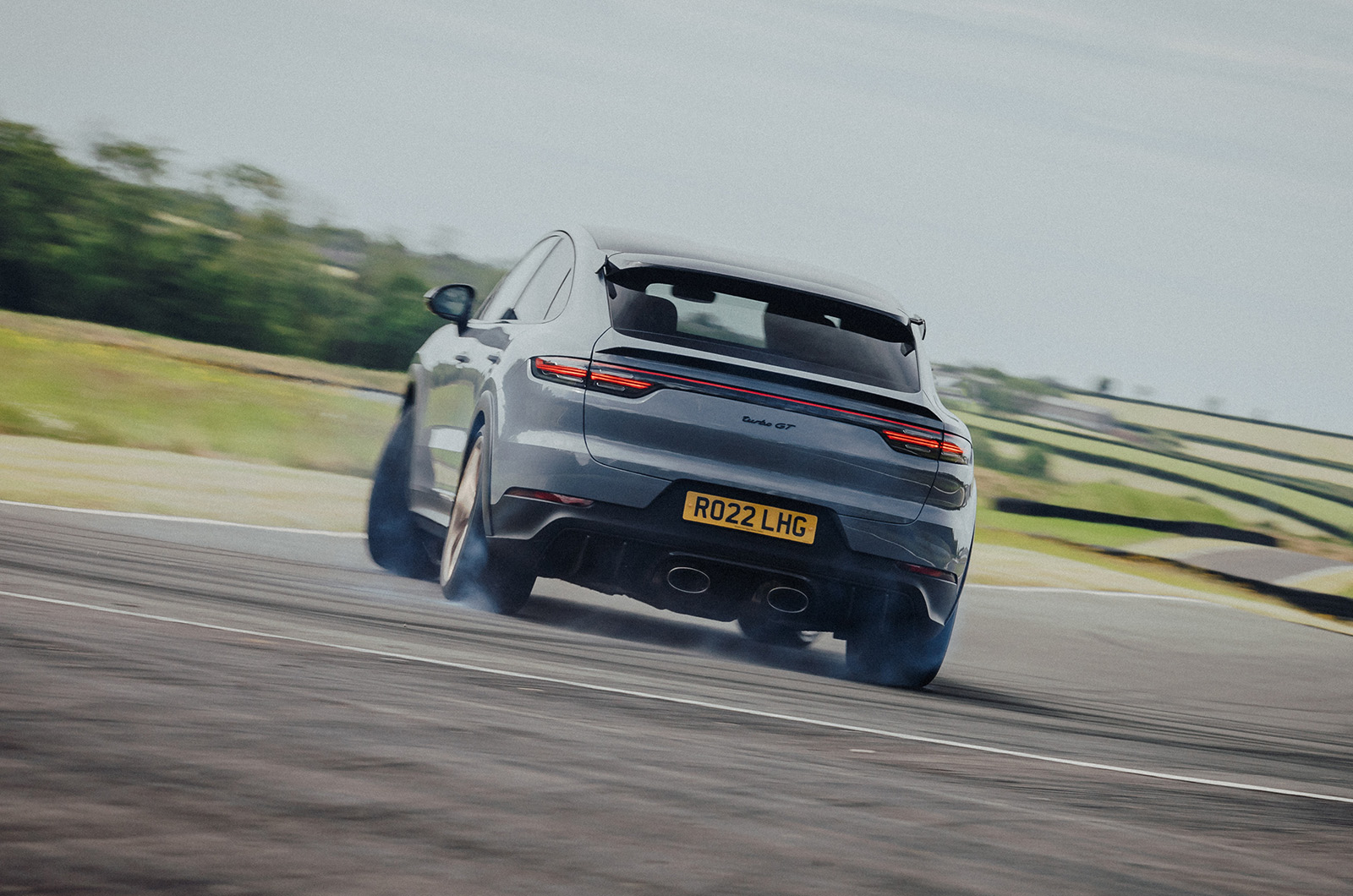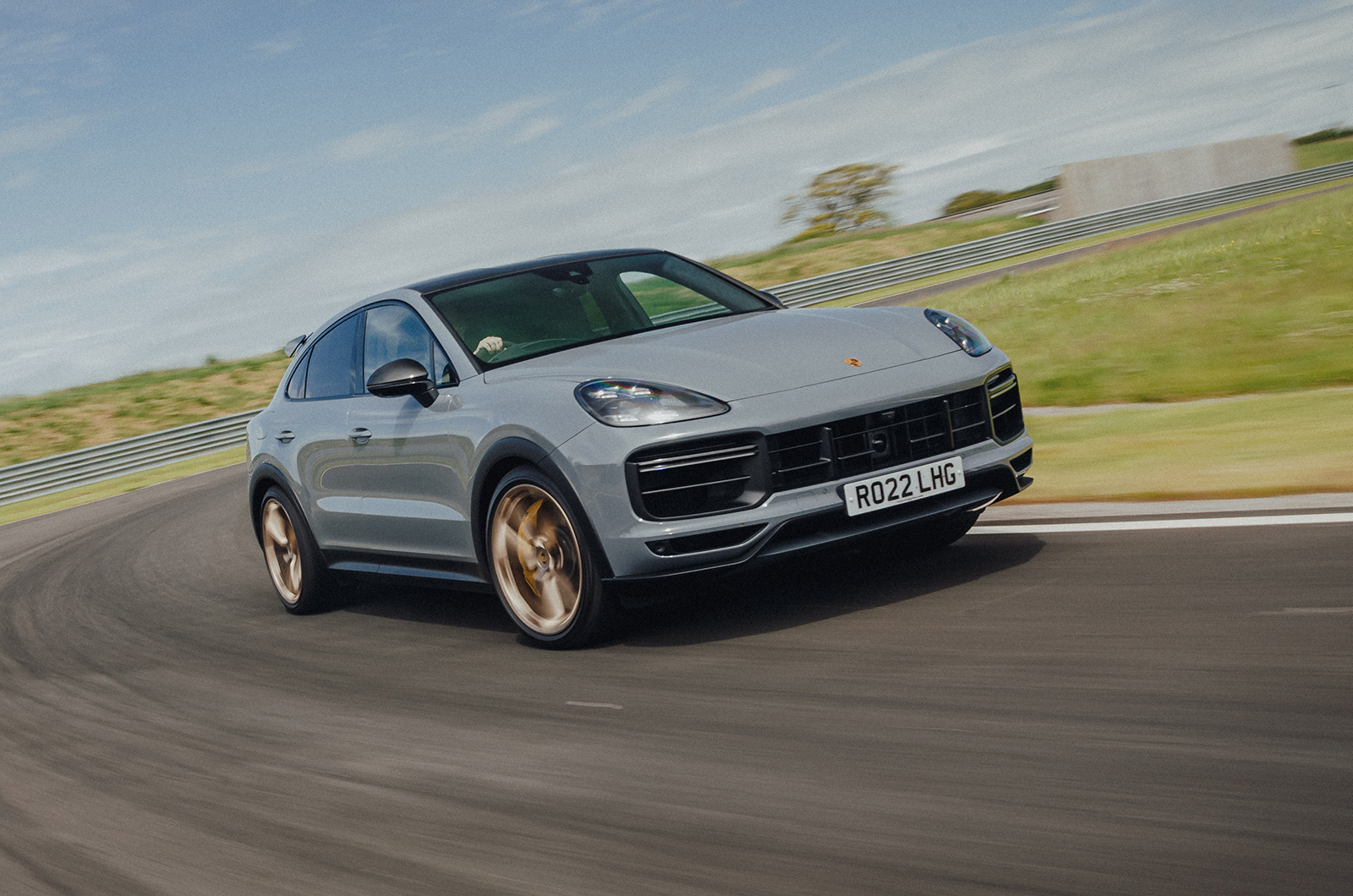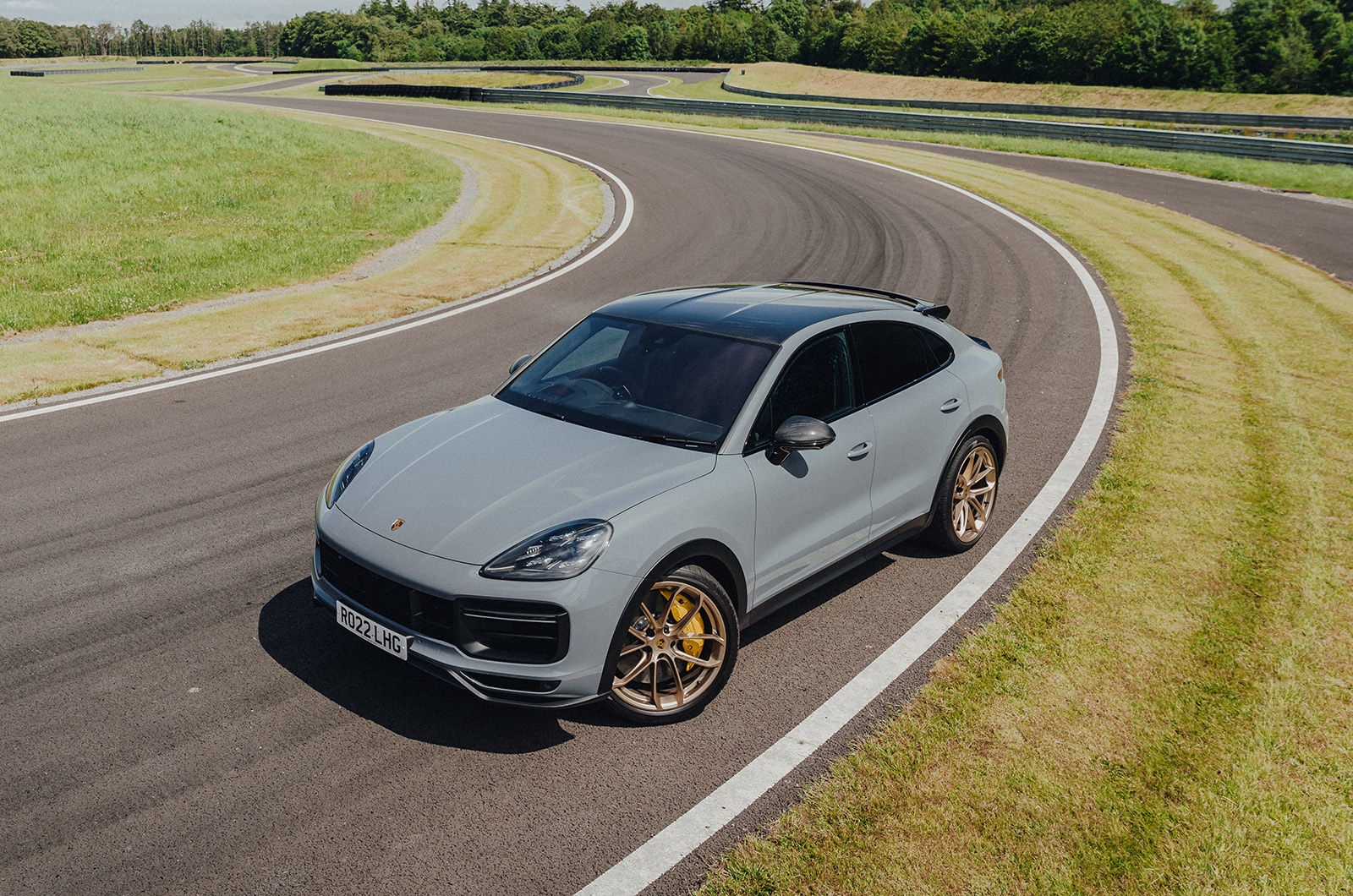When, during its road test three years ago, the Lamborghini Urus rocketed to 60mph in 3.3sec and 100mph in 7.8sec, while covering a standing quarter mile in just 11.6sec, we were staggered at an array of performance benchmarks we thought we would never see from any car so large and heavy. Inevitably, though, they have been beaten. And so, if the first key measure of success for the Porsche Cayenne Turbo GT was to reassert Porsche’s status as maker of the VW Group’s fastest SUV (as, on an unspoken level at least, surely it must have been), the car gets off to the perfect start.
On a dry and warm day at Millbrook Proving Ground, this 2251kg Porsche Cayenne needed just 3.1sec to hit 60mph from rest, 7.6sec to hit 100mph and 11.4sec for a standing quarter mile. Those are serious figures for any kind of performance car: quicker than a Mercedes-AMG GT 63 4-Door Coupé and even than the last Nissan GT-R we tested (a GT-R Recaro in 2017). From an SUV, they are little short of mind-blowing.
The outright performance is the result not just of massive power (on a power-to-weight basis, the Turbo GT is equivalent only to a mid-level 911), but an accomplished combination of grip, traction and the usual top-level modern electronic systems syncopation. You might imagine that any car with this much power and weight would splatter its torque onto the road like a toddler daubing emulsion with a 4in paintbrush. In fact, its launch control starts are as neat and closely managed as they are physically uncompromising.
There’s an elastic, catapult-like quality about the way the automatic gearbox uses all that torque when taking off quickly from rest, only for the engine to rush through the lower intermediate ratios like a magician dealing baccarat cards. There is give and take to the power delivery also due to some turbo lag evident below 2500rpm, Porsche’s lowering of the compression ratio of its turbo V8 taking a small but noticeable toll on low-range tractability. Even so, if you were trying to pick upshift points for the gearbox yourself under full throttle in manual mode, you would have a tough job indeed until hitting third or fourth gear.
At its most wild, the Cayenne Turbo GT doesn’t waste any opportunity to show its visceral brutality – but, running in normal driving mode, that V8 engine is a distant audible presence only, the gearbox is slick and accommodating, and progress can be smooth and mechanically refined. Flick that steering wheel rotor 180deg clockwise in Sport Plus, however, and there’s a starkness to the sudden change in dynamic character. Bristling extra control weight and response materialises, as does a bassy but likeable bellow from the V8, while the gearbox keeps the engine on song by downshifting early, holding onto lower gears for longer and announcing the Porsche’s sporting agenda to anyone within earshot.
There is a remarkably long-travel calibration for the accelerator pedal, via which it is hard to immediately compute just how much faster the car will go as you delve deeper towards the carpet. Typically, the answer is ‘plenty’. The carbon-ceramic brakes have decent bite, useful progression, and all the power and fade resistance you would want in such a heavy performance machine.


